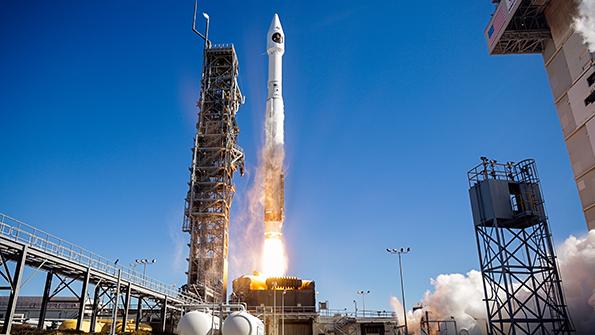
Employment in the core U.S. space industry workforce is at a 10-year high, climbing past 2011’s last peak of 149,818 to reach 151,797, according to preliminary 2021 U.S. data cited by the Space Foundation on April 4.
The launch vehicle sector has driven the core space workforce to expand more than 18% in just the last five years alone.
But space industry leaders fear a looming labor shortfall could slow the manufacturing boom, according to the first-quarter 2022 edition of the Space Report, the Foundations oft-cited tome released ahead of this week’s Space Symposium in Colorado Springs. The workforce shortage is emerging as one of the most significant pain points for an industry eyeing an even greater expansion than the onset of the first space age.
“Mass production of launch vehicles and satellites, leading to a record 134 launches putting 1,730 payloads into orbit in 2021, left space firms competing for assemblers, electricians, machinists, technicians, and welders in addition to engineers and other degreed professionals usually associated with space industries,” the report said.
“I would say it presents challenges, to be sure,” Liane George, United Launch Alliance’s vice president for human resources, said in the report. To entice workers, the joint venture between Boeing and Lockheed Martin has had to increase pay and is offering four-day work weeks.
The report includes other anecdotes from space manufacturers that said they were impacted by a lack of workers, including Viasat having to delay its Viasat-3 satellite.
Behind the shortfall of workers are two key societal trends: the large baby boomer generation, whose exit from the workplace has concerned business leaders for decades, has seen many early retirements during the COVID-19 pandemic. At the same time, young, new workers entering the workforce eschew manufacturing jobs and related skilled positions for various reasons.
“There is a perception issue,” Lesley Conn, the Foundation’s director or research and analysis, told reporters while unveiling the report. “There’s a perception that it is blue collar, grungy, exhausting work.” Also, students get scared off by science, technology, engineering and math disciplines while still in school.
Large space manufacturers have the capacity to train new workers but there is not enough interest, she said.
But for all the concern, the issue seems more of a pain point rather than a roadblock. Conn acknowledged it is not grinding the sector to a halt, and the situation is even good for retirement-age workers who are being recruited and retained to address workforce gaps. Skilled workers with an entire career of experience can be repositioned relatively quickly for many open jobs now in space, she noted.





